How To Make A Mystical Garden
Swipe to view slides
-
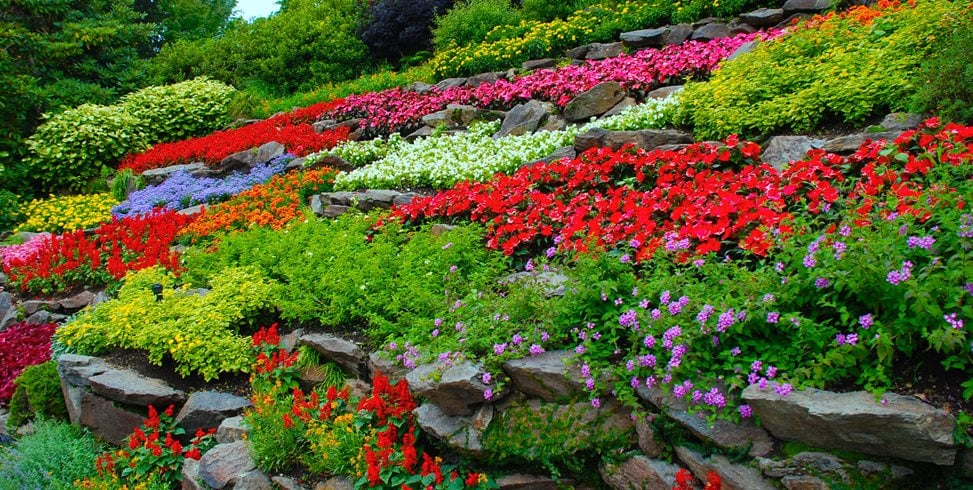
This terraced flower garden features layers of vibrant color.
-
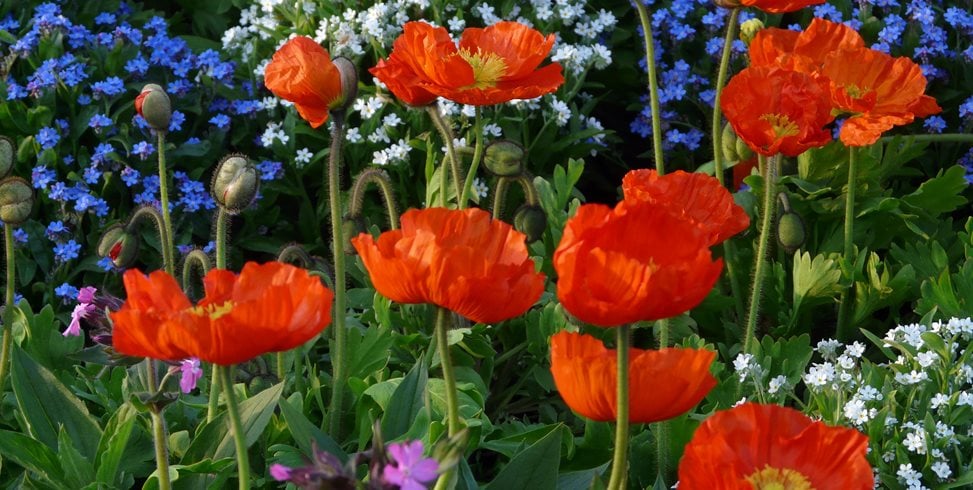
A splash of bright orange poppies brightens up a flower border.
-
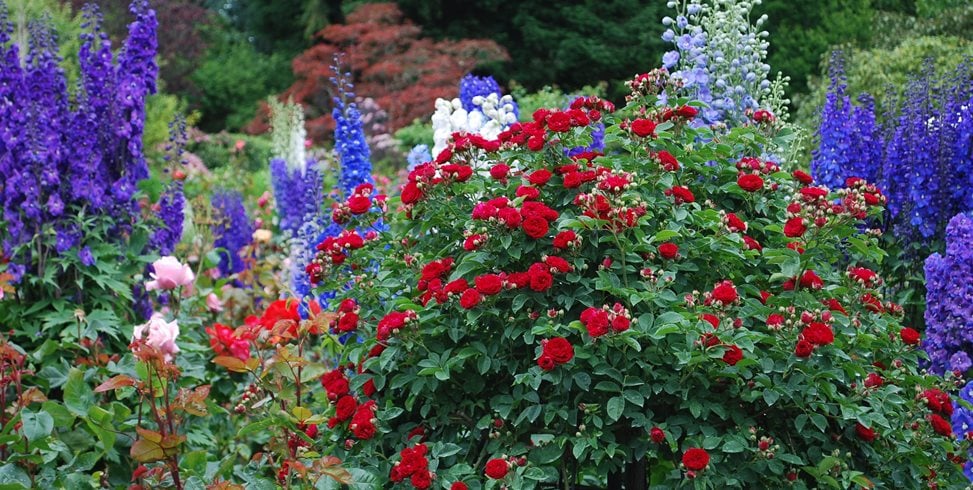
Color, size and shape variations work together to enliven a flower bed without being overwhelming.
-
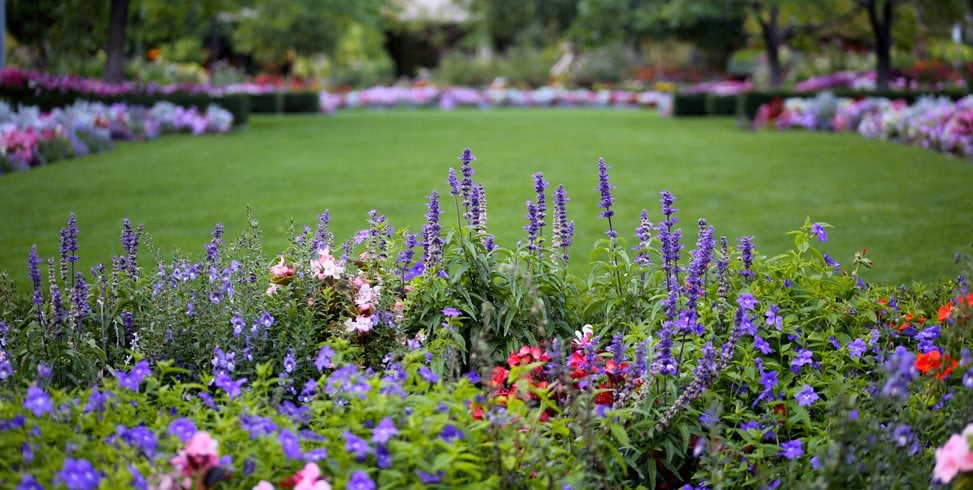
The repetition of purple throughout this flower garden brings unity to the design.
-
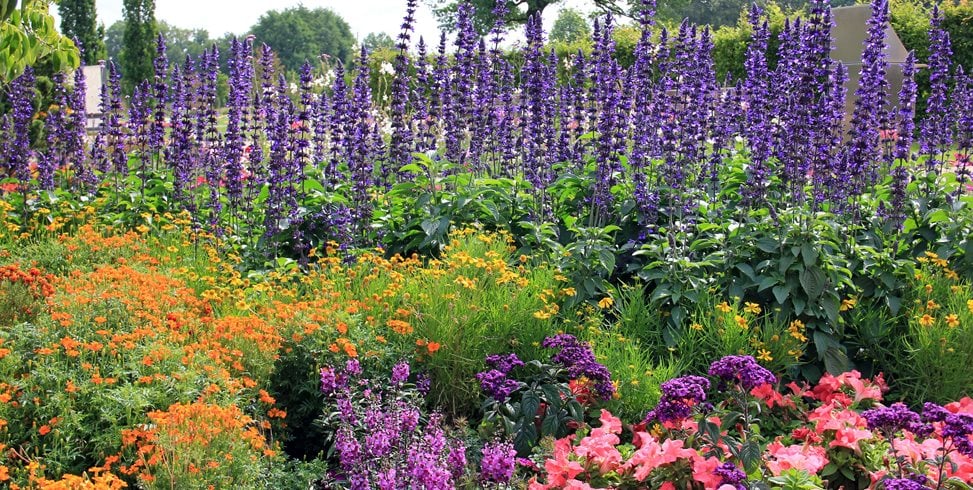
Subtly layering flowers from low-growers to tall spires keeps sight lines intact and creates a more natural look.
5 Tips for When You Create A New Flowerbed
Discover five considerations when planning a new flowerbed in your landscape.
Order best-selling flowers online from Proven Winners
If you've always dreamed of having a gorgeous flower garden, now is the time to make it happen. Starting a flower garden is both fun and rewarding. Follow these guidelines for beginners and you'll be off to a great start.
Step 1 - Know Your Garden
- Know your site: The first step in creating the perfect flower garden is to familiarize yourself with the area you want to plant. Landscape architect, Mary Ellen Cowan suggests, "Really know your site. Listen to Mother Nature to learn about your land's traits. Be honest with light, moisture conditions, and the topography."
- Know your soil: An important tip to ensure a successful flower garden is to do a soil test. Erin Benzakein, owner of Floret Flower Farm, explains, "To collect soil samples, dig a hole 1 foot deep, gather a few tablespoons, then repeat throughout your garden until a quart-sized jar is full. You can send your soil to a testing lab like the UMass Soil and Plant Nutrient Testing Laboratory (soiltest.umass.edu) and use the result to amend your soil before planting."
- Know your flowers: Cowan also says, "Learn what plants grow well in your soil. From there, you can figure out what to do design-wise." Carol Bornstein, horticulturist at the Santa Barbara Botanic Garden, recommends "visiting nearby natural areas that mimic your conditions in the wild to discover the flowers that you like." Not sure where to start? Check out this list: 21 Easiest Flowers for Beginners.
- Know your frost cycle: To make sure your newly planted garden will survive the seasons, you will need to know your area's average last and first frost dates. Benzakein notes this will affect when you start seeds and will allow you to plant varieties that will grow into autumn. Starting your seeds about 4 to 6 weeks before the average last frost date will give your plants a jump start. The plants will fill in faster and cut down on weeds. If you don't have a greenhouse to start your seeds in, a covered seed tray indoors under growing lights will work.
Step 2 - Create Your Color Palette
- Create unity: When choosing a color scheme, Bornstein suggests picking one that will "help unify the landscape." Using variations and different tones of the same color can make an impact without dominating.
- Create excitement: While sticking to a few similar hues can create a feeling of harmony, complimentary colors—opposites on the color wheel—create juxtaposition. For example, the combination of blue and yellow is fresh, lively, and summery. "In a sunny spot, warm tones like yellows, oranges, and reds make the most of the light, especially during the 'golden hours,' when the sun rises or sets. However, on their own, hot colors can appear rather flat. Blues compliment the yellows, creating harmony and vibrancy. Occasional splashes of hot orange and red add a little thrill," says Keith Wiley of Wildside, his garden in Devon, England.
- Create peaceful areas: Wiley adds that it is prudent to practice restraint, as too much variety can feel tiring. "You can't have everything screaming at you in the garden. Separate areas with intense color or high drama with neutrals," says Bill Thomas of Chanticleer. Above all, landscape designer and author of Heaven is a Garden, Jan Johnsen encourages the use of colors you personally enjoy in your garden.
Step 3 - Design Like a Pro
- Design with shape: When designing a flower garden, world-renowned Dutch garden designer Piet Oudolf suggests that shape is a good place to start. Perennials have several basic shapes: spires, plumes, daisies, buttons, globes, umbels, and screens. Try putting different shapes together and see if they spark off each other. Some combinations will be vibrant and dynamic, others may clash. Planting similar flower shapes together can reinforce an idea.
- Design with repetition: The repetition of key shapes or colors provides a sense of calm and visual unity. Ideally, advises Wiley, plants you repeat should have a long season, not look untidy after flowering, and flourish in the garden's conditions. Strategic repetition of flowers offers continuity when moving from one area of the garden to another.
- Design in layers: Matt James, in his book, How to Plant a Garden, states, "When planting, try to pull one layer subtly into another — and vice versa — to create a more natural look, rather than simply arrange the layers like a staircase." Oudolf warns that you can "lose plants in the back," so it is important to make sure sight lines remain to see flowers at the rear of a border.
- Design in combinations: "Think in terms of plant combinations rather than individual species," suggests Sean Hogan of Cistus Nursery near Portland, Oregon. Mixing plant heights, sizes, colors, scale, and textures keeps the garden engaging in all seasons. Relaxed plantings will provide color, movement and a meadow-like feel.
- Design with fragrance and movement: Dan Hinkley, plant hunter and author, has discovered what he enjoys most in his garden — fragrance and movement. "These elements of a garden aren't included in the design often enough." He advises to take advantage of natural breeze patterns to allow the scents of flowers to waft toward your home or patio areas.
Bonus Flower Garden Tips
- For a more productive flower garden and to encourage longer stems (better for cut flowers and floral design), Benzakein advises to plant flowers close together. "This will reduce weeds and increase the number of flowers you produce."
- If you are growing flowers for cutting, "Don't forget to grow foliage and filler plants for arrangements," says Benzakein.
- Donna Hackman, retired garden designer, recommends that if you want your flowers to spill over in a natural way, but don't want them within reach of the mower's blades, install rectangles of flagstone around the beds. Also, keep paths between flower beds wide, so flowers won't be trampled underfoot when walking through the garden.
- Hackman also suggests choosing smaller cultivars to reduce pruning work and planting shrubs at the center of your flower beds to provide year-round structure and height.
With seemingly endless design options, these tips will guide you in making the best choices when starting a flower garden, allowing you to sit back on a nice afternoon and enjoy the fruits—or blossoms—of your labor.
Related:
Tools for the Beginner Gardener
Starting a Kitchen Garden
How To Make A Mystical Garden
Source: https://www.gardendesign.com/how-to/start-a-flower-garden.html
Posted by: walkerbegaid.blogspot.com

0 Response to "How To Make A Mystical Garden"
Post a Comment